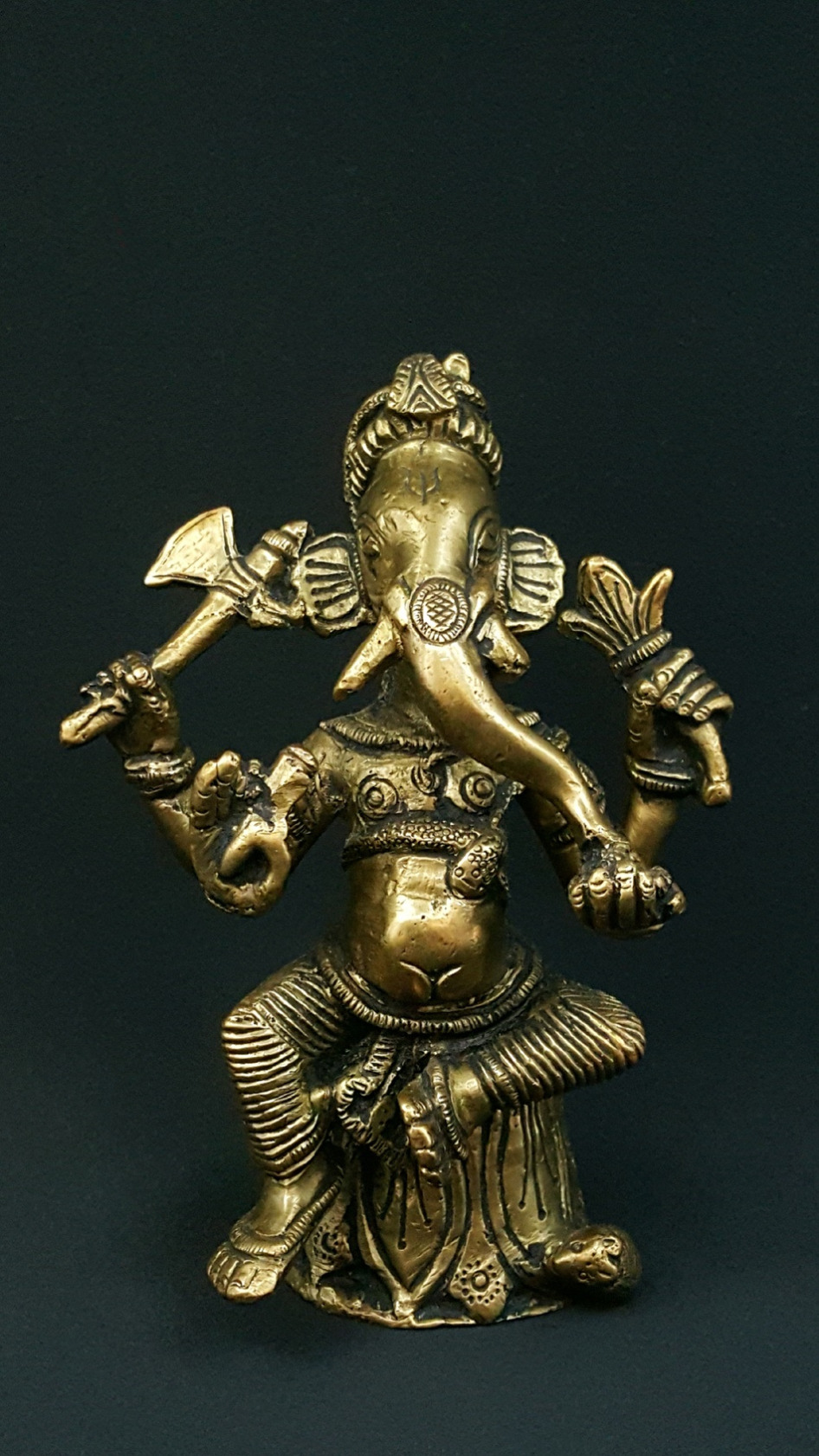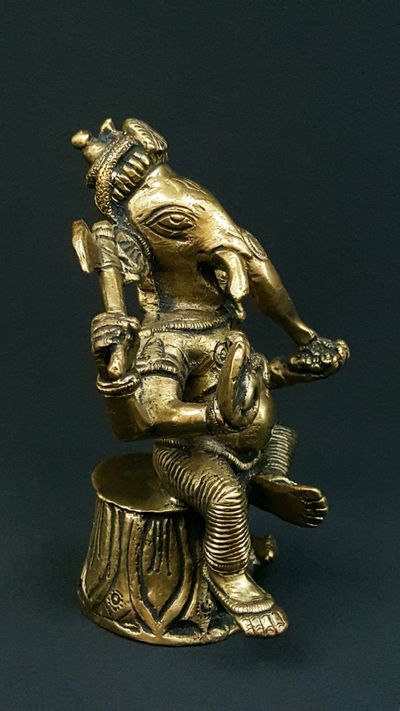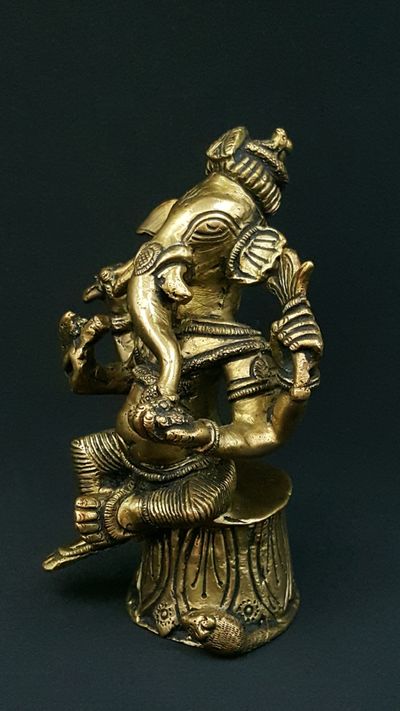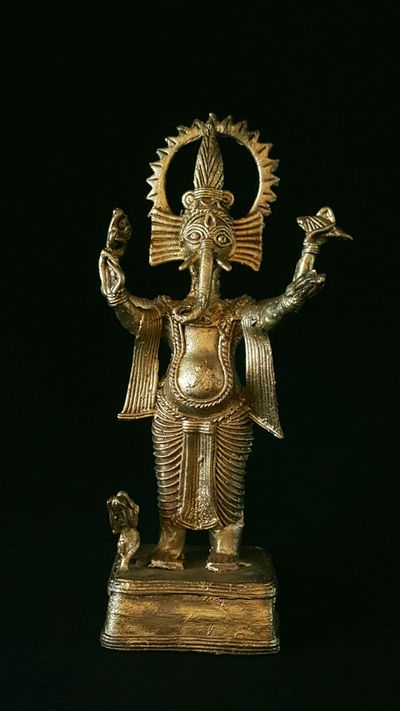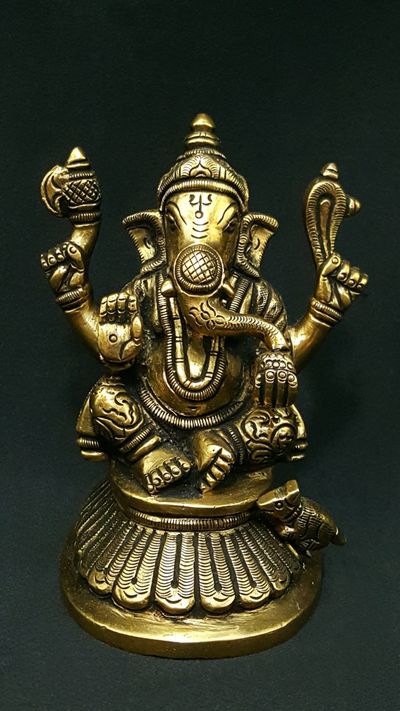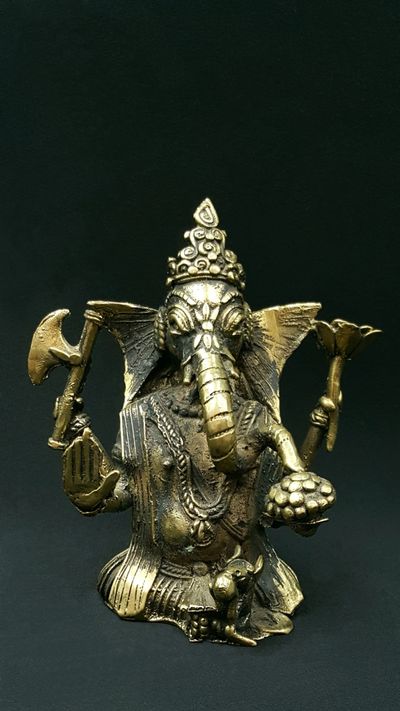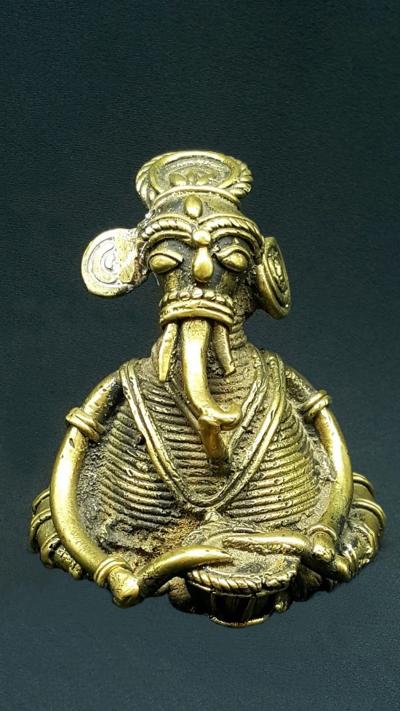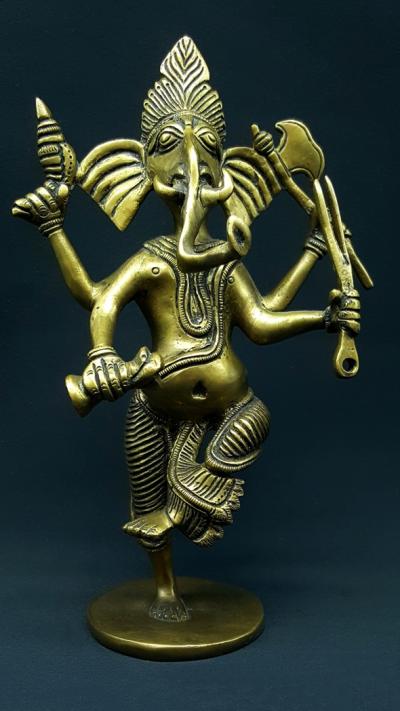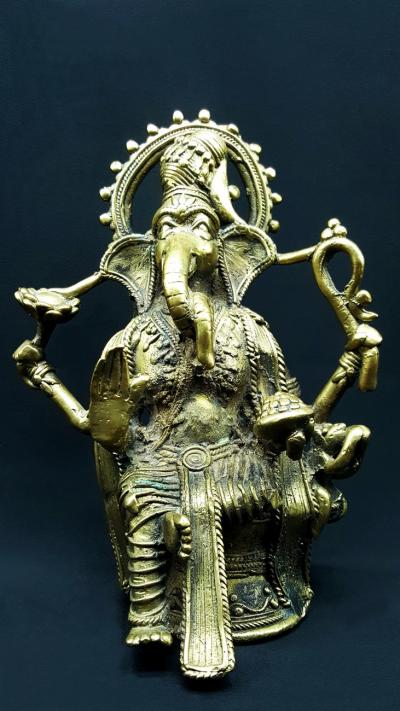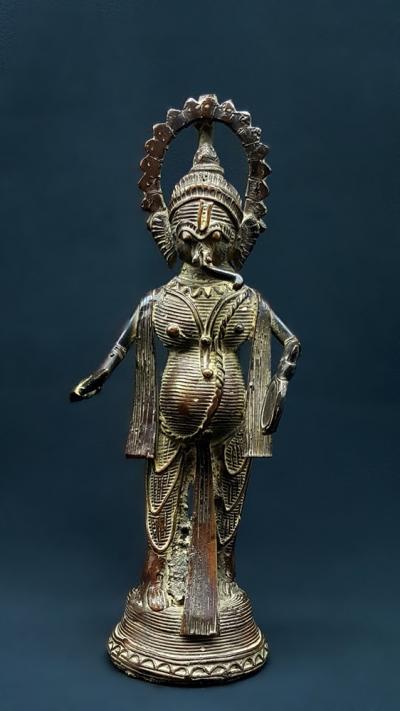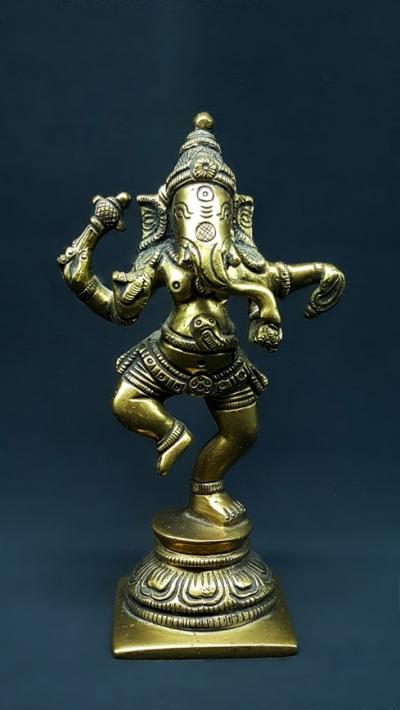Statue Ganesha Assis Himalaya
Le Sage
€220.00
Rare sculpture en laiton de Ganesh dans le style Chamba : un des fils de Shiva et de Parvati (avec Skanda). Il symbolise la richesse, la sagesse, la chance. En savoir plus...
Hauteur : 13,6 cm
Poids : 0,870 Kg
Art sacré
Technique de la cire partielle - Alliage cuivreux
Origine : Dehli - Inde
Livraison gratuite UE, Norvège et Suisse
Description
Ganesh dans le panthéon hindou est un des fils de Shiva et Parvati (avec Skanda). Il symbolise la richesse, la sagesse, la chance.
Une des histoires de son origine (car il y en a de nombreuses).
Parvati, seule, se languissait des longues absences de Shiva : un jour lui vint l'idée de modeler un fils, à qui elle donna la vie dans le Gange. Elle le chargea de garder ses appartements et de ne laisser entrer personne sous aucun prétexte. Shiva, rentrant chez lui, trouva un homme devant sa porte : furieux il le décapita avec son trident. Indignée Parvati exigea auprès des Dieux qu'ils ramènent son fils à la vie avant la fin du jour : les dieux décidèrent de couper la tête du premier nouveau né trouvé qui se trouva être un éléphanteau !
Cette statuette de Ganesh symbolise : la sagesse
Posture Assis - en position de demi lotus (Virâsana) - position caractéristique de la divinité ayant vaincu les démons. Le ventre de Ganesh est toujours gros : c'est le centre des énergies vitales, contenu par le serpent qui les retient.
Gestes Le bras droit avec le coude plié tient une hache et le bras gauche, coude replié tient une fleur de lotus. Ses deux autres mains font le geste de protection (celle où il tient aussi le morceau de sa défense cassée) et de d'abondance (laddhu- sucrerie contenue dans la paume). Le cordon sacré des brahmanes, marqué par un fil très discret, orne son ventre.
Vêtement Un cordon sacré, pas de bijoux, un simple pantalon tissé : sa tenue est d'une grande sobriété.
Couvre-chef Chignon haut surmonté du cobra, son front est orné du trident symbole de Shiva.
Monture le rat - Mushaka - symbole à la fois de convoitise et de maladie mais aussi de prospérité et de richesse, d'intelligence. Le rat peut représenter à lui seul Ganesh : il met l'accent sur l'ambivalence de Ganesh qui unit les opposés : grand/petit, mi-animal/mi-humain, esprit vif dans un corps massif. Son ventre n'inclut -il pas l'univers entier ?
Attributs et armes La hache de guerre est l'arme symbolique qui triomphe de l'ignorance, de l'attachement. Le lotus symbolise le sein maternel (origine de la vie), la sagesse : la connaissance qui mène à l'éveil, la pureté (et donc la transformation qui permet l'expression de la beauté dans un milieu marécageux), la paix.
